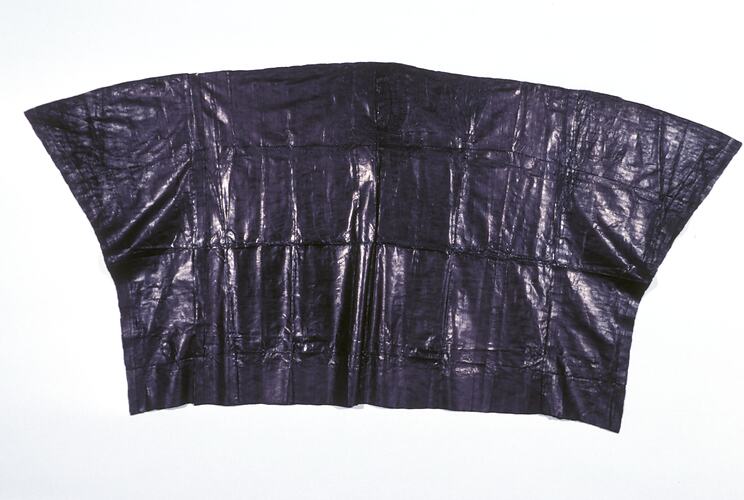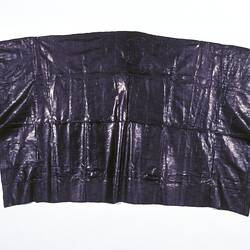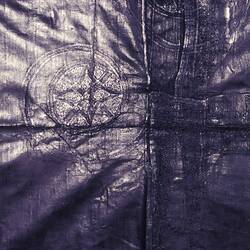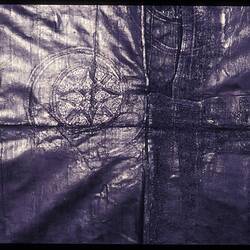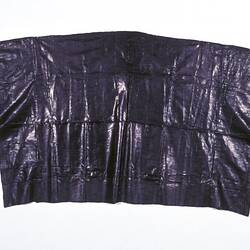Summary
The rigar kore was a highly valued man's garment made by Hausa tailors of Kano in northern Nigeria. It was sold to the Kanuri of Borno Kingdom, hundreds of kilometres to the north-east. The gown was made from native cotton woven into five-centimetre strips and sewn together to form a voluminous garment. The hand-embroidery around the collar and on the right breast is traditional Hausa design. The gown was dyed repeatedly with native indigo, soaked in a viscous resin and rubbed with indigo powder before slaves pounded the garment with wooden mallets to create a lustrous sheen. The rigar kore was a prestige item; perspiration or washing would cause the indigo to loose its lustre. The toga-like wrap was woven on a narrow loom, and narrow-strip weaving was well-established when European slave traders arrived in west Africa in the sixteenth century. European textiles, Chinese silks and the later Italian silks were traded for slaves and unravelled and woven into local garments employing indigenous designs. In time, the Ashanti (Asante) Kingdom came to dominate the slave trade and the wealth that it generated, and this led to royal patronage of weavers and widespread production of prestige cloths. The complexity of design was indicative of the position of the wearer in a hierarchical society based on rank, title and seniority.
Physical Description
A woven cotton wrap dyed with native indigo. The upper edge or collar is embroidered.
Significance
The rigar kore was a prestige item and perspiration or washing would cause the indigo to loose its lustre. Few examples in original condition, like this one, have survived. This is one in a collection of Hausa and Nupe garments and artefacts from Nigeria that were acquired in 1910 from a British colonial officer, W.H. Freer-Hill.
More Information
-
Object/Medium
Garment
-
Maker
-
Locality
-
Date Produced
-
Collector
-
Date Collected
-
Dimensions
271 cm (Width), 133 cm (Height)
Measurement From Conservation. Measuring Method: Max. dimension
-
Keywords
-
Collection Names
-
Type of item
-
Discipline
-
Category
-
Collecting Areas
